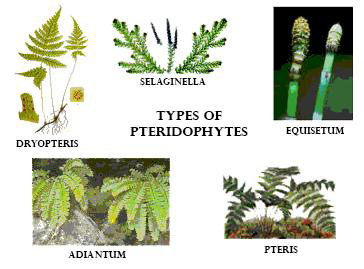
Pteridophytes are also called
(a)Phanerogams
(b)Cryptogams
(c)Vascular cryptogams
(d)Embryophytes
Answer
563.7k+ views
Hint: These are the plants that have primitive vascular systems but lack seed production. Moreover, their xylem does not have true vessels and present with only tracheids. Phloem in them also lacks companion cells.
Complete answer:
Pteridophytes are also called cryptogams. Let's begin the explanation by understanding what cryptogams are. Eichler in 1883 gave the phylogenetic system of classification of the plant kingdom. He divided plants based on their seed-bearing ability into two subkingdoms namely cryptogams and phanerogams. ‘Cryptogams’ is the term used for plants that do not form flowers and seeds. So, it is assumed that their reproduction is hidden as they produce spores. ‘Phanerogams’ consists of plants that bear seeds and have true vascular bundles. Cryptogams have a thalloid plant structure. This group includes thallophyta, Bryophyta, and Pteridophyta. Gymnosperms and angiosperms come under phanerogams.
Additional Information: -Pteridophytes are found in almost all types of habitat but often found in moist, shady places.
-The dominant phase is represented by sporophyte. They lack secondary growth.
-They use spore formation as the mode of asexual reproduction and it is done in sporangia.
-The sporangia have 12 mother cells and produce haploid spores which after germination produce prothallus which is the gametophyte and is monoecious which means it has both antheridia and archegonia.
-The gametophytes are independent and are of autotrophic nature. The antheridium is a male sex organ and produces sperms that swim and reach the female organ archegonia.
-They require water in order to facilitate fertilization.
So, the correct answer is 'Vascular Cryptogams'.
Note: -Phanerogams present with well-differentiated plant bodies. The body can be divided into two distinct root shoots and leaves.
-In bryophytes, the dominant phase of the life cycle is the gametophytic plant body.
-‘Vascular cryptogams’ are also called tracheophytes. It is an old botanical phrase used to refer to those vascular plants that do not make seeds.
-‘Embryophytes’ are multicellular eukaryotes that exhibit a characteristic of nurturing the young embryo sporophyte within the tissues of the parent gametophyte.

Complete answer:
Pteridophytes are also called cryptogams. Let's begin the explanation by understanding what cryptogams are. Eichler in 1883 gave the phylogenetic system of classification of the plant kingdom. He divided plants based on their seed-bearing ability into two subkingdoms namely cryptogams and phanerogams. ‘Cryptogams’ is the term used for plants that do not form flowers and seeds. So, it is assumed that their reproduction is hidden as they produce spores. ‘Phanerogams’ consists of plants that bear seeds and have true vascular bundles. Cryptogams have a thalloid plant structure. This group includes thallophyta, Bryophyta, and Pteridophyta. Gymnosperms and angiosperms come under phanerogams.
Additional Information: -Pteridophytes are found in almost all types of habitat but often found in moist, shady places.
-The dominant phase is represented by sporophyte. They lack secondary growth.
-They use spore formation as the mode of asexual reproduction and it is done in sporangia.
-The sporangia have 12 mother cells and produce haploid spores which after germination produce prothallus which is the gametophyte and is monoecious which means it has both antheridia and archegonia.
-The gametophytes are independent and are of autotrophic nature. The antheridium is a male sex organ and produces sperms that swim and reach the female organ archegonia.
-They require water in order to facilitate fertilization.
So, the correct answer is 'Vascular Cryptogams'.
Note: -Phanerogams present with well-differentiated plant bodies. The body can be divided into two distinct root shoots and leaves.
-In bryophytes, the dominant phase of the life cycle is the gametophytic plant body.
-‘Vascular cryptogams’ are also called tracheophytes. It is an old botanical phrase used to refer to those vascular plants that do not make seeds.
-‘Embryophytes’ are multicellular eukaryotes that exhibit a characteristic of nurturing the young embryo sporophyte within the tissues of the parent gametophyte.

Recently Updated Pages
Why are manures considered better than fertilizers class 11 biology CBSE

Find the coordinates of the midpoint of the line segment class 11 maths CBSE

Distinguish between static friction limiting friction class 11 physics CBSE

The Chairman of the constituent Assembly was A Jawaharlal class 11 social science CBSE

The first National Commission on Labour NCL submitted class 11 social science CBSE

Number of all subshell of n + l 7 is A 4 B 5 C 6 D class 11 chemistry CBSE

Trending doubts
10 examples of friction in our daily life

One Metric ton is equal to kg A 10000 B 1000 C 100 class 11 physics CBSE

Difference Between Prokaryotic Cells and Eukaryotic Cells

1 Quintal is equal to a 110 kg b 10 kg c 100kg d 1000 class 11 physics CBSE

State the laws of reflection of light

Explain zero factorial class 11 maths CBSE




